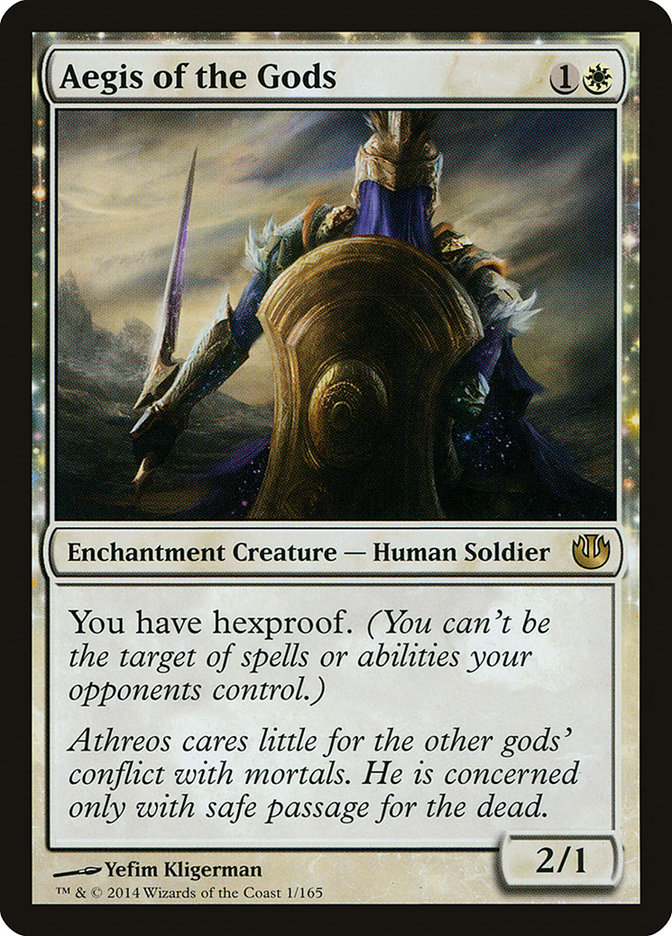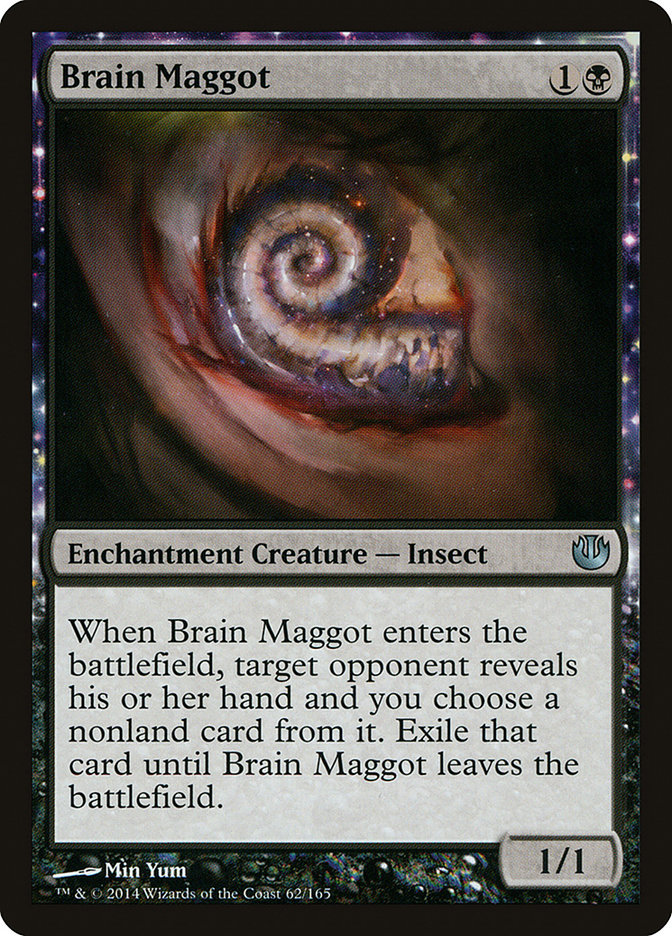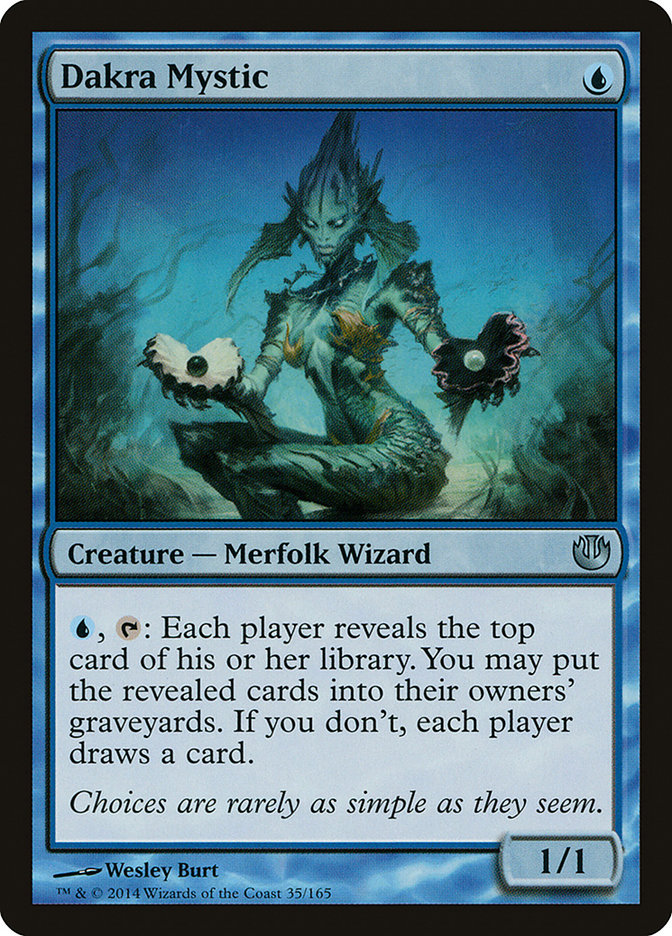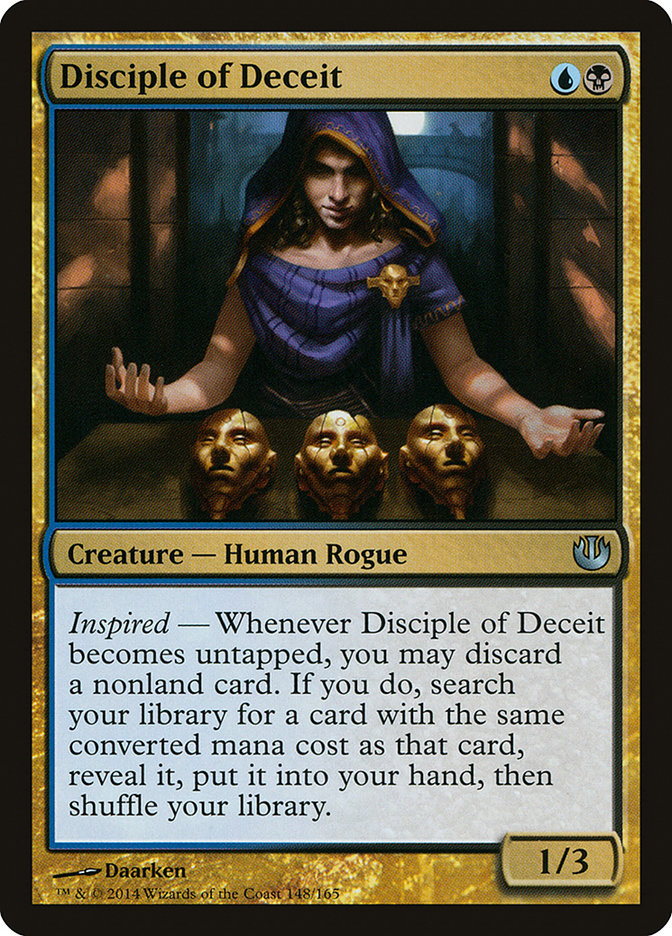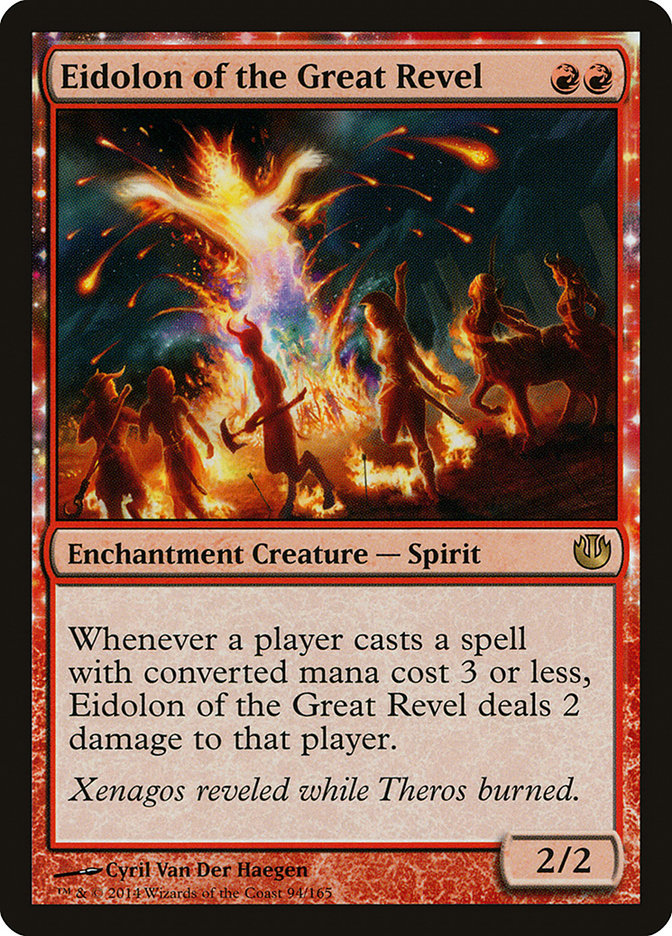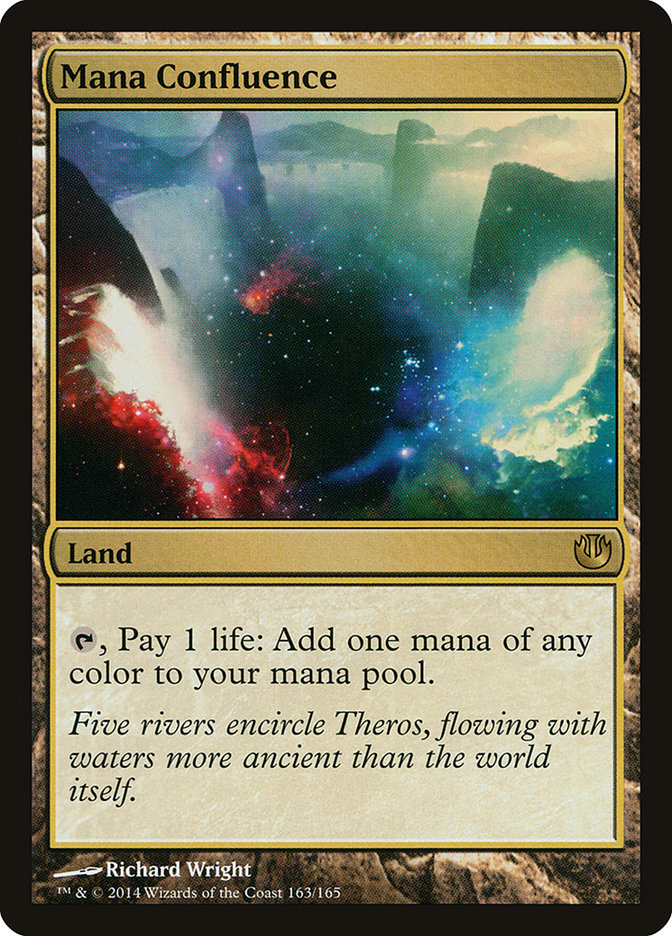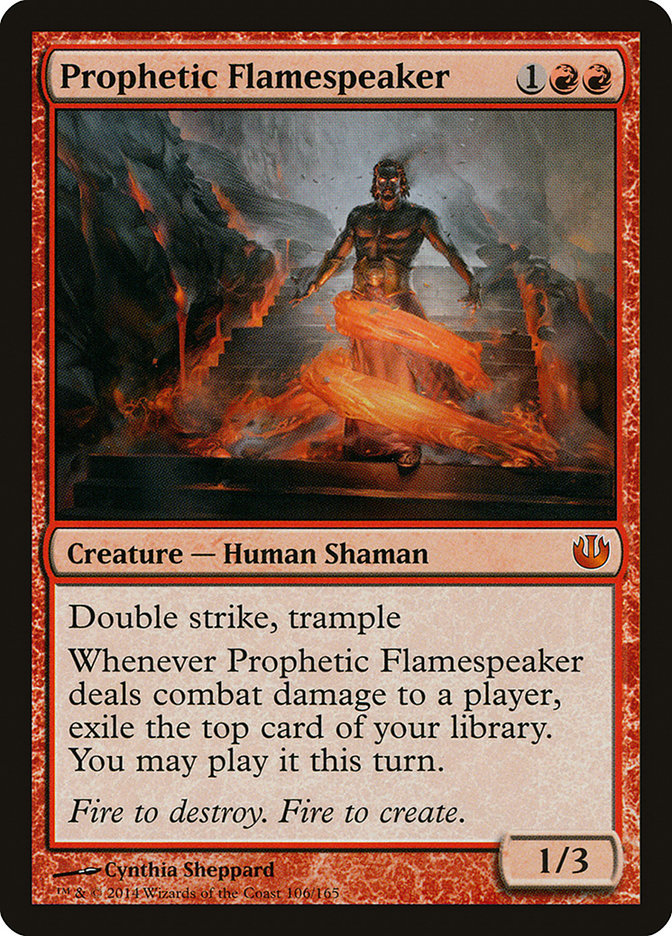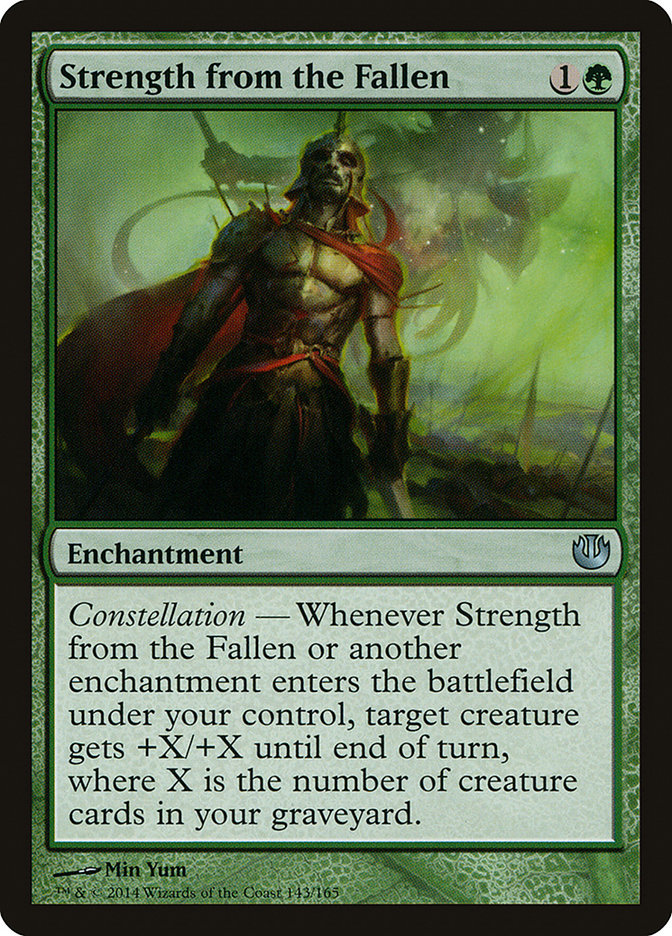The Pro Tour Magic 2015 qualifier season officially ended last Sunday.
That means Pro Tour Khans of Tarkir qualifiers start Saturday.
That means Modern season starts Saturday.
I’m willing to bet that a large number of people who will be playing in Modern PTQs this season haven’t really touched the format since last season.
Another large number of people will have played in one or two of the seven Modern Grand Prix since then (most likely the giant Grand Prix Richmond).
Long story short: a lot has changed in the meantime.
The Deathrite Shaman Ban
This really is the big storyline that defines this year as opposed to last year.
Let’s get the first part of this out of the way: The Deathrite Shaman ban has no more killed Jund than the previous Bloodbraid Elf ban. Unlike the
Bloodbraid Elf ban, it did actually take away a unique piece of the previously existing lists. While Olivia Voldaren, Huntmaster of the Fells, Chandra,
Pyromaster, and a ton of other four drops exist to provide value on par with Bloodbraid Elf, the backup mana creature options didn’t come close to matching
Deathrite Shaman.
Most of the shifts we see in current Modern compared to last year are a direct result of the fallout of this change.
Deathrite Shaman provided two things to Jund: speed and graveyard hate.
The loss of speed might seem like it matters the most against the pure combo decks like Storm and Twin, but Jund still has all the tools it needs to fight
there. Discard spells and Abrupt Decay cover pretty much anything people will throw against you and are cheap enough that they will be cast when needed.
Where the speed matters is against blue Snapcaster Mage decks and the land-based combo decks (Scapeshift and Tron), and almost all of this is on the back
of when you can land a Liliana of the Veil. Against the blue decks, you are now never going to sneak in that Liliana under a Mana Leak. Against Tron and
Scapeshift, you have to start +1-ing a turn later, which translates to a big difference in the attempt to lock them out of the game.
What about the graveyard hate? Scavenging Ooze still does its fair share there if not more than Deathrite did when you really need a Tormod’s Crypt. But
what about the games where you just want some incidental graveyard interaction? Compare the baseline of Scavenging Ooze (approximately Grizzly Bears, maybe
Gnarled Mass, Rumbling Baloth, or Silverback Ape) to the baseline of Deathrite Shaman (still the best mana creature ever). If you’re in a matchup where you
have to also extra the maximum amount of value from each of your cards like UWR Control, the downgrade from Deathrite Shaman to Scavenging Ooze for the
“turn off Snapcaster Mage” role is a big one.
So, as expected, we’ve seen a lot more Snapcaster Mage decks. We’ve also seen a lot more work being done by Kitchen Finks, and we’ve seen Scapeshift rise
to beat Jund successfully as opposed to not cutting it prior to the Deathrite ban.
The Pro Tour is Old News
The results from the Pro Tour are, at best, marginally indicative of what this format actually looks like.
Modern really is a format where the metagame makes major shifts in response to information. Occasionally, it gets stuck in a rut (Jund), but more often
than not something comes along to crack the current state of the metagame.
The Pro Tour was a format still reeling from the Deathrite ban and the Wild Nacatl unban. A lot of the metagame was focused on Wild Nacatl. Playing the
card, winning the mirror, and beating the card were all major concerns. After that event, Zoo fell off the map and the metagame more or less returned to
what it was before.
You saw decks like Storm, Splinter Twin, and Ad Nauseam catch the Pro Tour off guard because there were relatively few Jund decks. That is no longer the
case. People are ready with Thoughtseizes and Abrupt Decays.
There are also a number of decks that failed to beat Zoo that people dismissed for the Pro Tour but are perfectly viable now. A great example is
Scapeshift, which won the recent Grand Prix in Minneapolis but was really too slow to handle Zoo, especially if they had any interaction.
The metagame now is not the metagame then. Don’t copy the winning lists from that event and expect to succeed.
No Cats Allowed
Despite being all the buzz of the post-unban world, we’ve seen almost no Wild Nacatls at the top tables of events.
Why did a 3/3 for G fail to make a splash in Modern?
All the reasons are things we’ve seen before across three different formats.
The first format we can reference is Legacy. Wild Nacatl has failed to make an appearance over the past couple years in that format. One of the main
reasons is how poorly the Zoo strategy matches up against Snapcaster Mage. One of the things Zoo traditionally exploited was that blue control couldn’t
field enough removal to kill Zoo’s creatures while still being a reasonable deck. Snapcaster Mage altered how spell density worked in these kind of decks,
and even if the 2/1 body didn’t matter against Zoo, the fact that it was more Lightning Bolts was enough to make things difficult. With the rise in
Snapcaster Mages after Deathrite Shaman’s ban, things were not friendly to Wild Nacatl.
The next format we can reference is old Extended. Zoo was around for years before the change to Modern and Wild Nacatl’s banning. One of the best weapons
against the deck has always been Blood Moon, but very few decks have been able to realistically cast the card. Blood Moon is uniquely back breaking against
Zoo. Not only does Blood Moon prevent Zoo decks from casting their spells, it negates their previous plays. Wild Nacatls are capped at 2/2, and Kird Apes
or Loam Lions are returned to Mon’s Goblin Raiders or Eager Cadets. Many Modern decks have tried to cast Blood Moon or Magus of the Moon in the past, but
that plan was pushed out of the metagame in large part because Deathrite Shaman made Jund relatively Blood Moon-proof. With the banning of Deathrite Shaman
and the expected prevalence of Zoo at the Pro Tour, multiple decks shifted back to Blood Moon.
The final reason comes from the first Modern Pro Tour back in 2011. At Pro Tour Philadelphia, the story of the weekend was all combo. Going into the
weekend, the story was all how Cloudpost decks were dominating Zoo. What ended up happening was that people found combo decks that could outrace Zoo or at
least match it in speed. This exact thing happened at the Pro Tour. Storm was a Turn 3 combo deck if it untapped with one of its two drops in play. Ad
Nauseam’s combo pieces were all Fogs that extended almost every game into the Turn 4 or 5 range where it typically wins. Splinter Twin decks started
universally integrating Snapcaster Mages and Lightning Bolts. It’s also worth noting that the midrange decks that exist in Modern (Jund and Pod) are not
only better than Zoo at handling opposing combo decks but also leverage larger creatures and/or Kitchen Finks to beat Zoo.
Overall, the early portion of this season has not been friendly to Zoo.
That said, there are definitely futures where Zoo is a very reasonable option. I just don’t think we are quite there yet.
Current Trends:
I talked a lot about this in my article covering the results of Grand Prix Minneapolis, but just
to refresh quickly:
The top decks are Jund, UWR Snapcaster decks, Birthing Pod, and Midrange Splinter Twin. Pod is likely the deck people would call the “best” deck, but it
was caught off guard by midrange while most lists were heavily constructed towards a metagame of mirrors and Twin and put up numbers but not final wins at
Minneapolis.
Affinity, Storm, and Ad Nauseam are the linear decks on the downswing with Affinity being the one that is still clinging on a little bit.
Scapeshift was the breakout linear deck, winning the event.
Deck Specific Odds and Ends:
numbers drop down. If that happens, there’s a lot to be learned from Michael Hetrick’s sideboard from Pro Tour Valencia:
Creatures (29)
- 2 Simian Spirit Guide
- 4 Street Wraith
- 2 Shriekmaw
- 4 Fulminator Mage
- 1 Jungle Weaver
- 4 Architects of Will
- 4 Pale Recluse
- 4 Monstrous Carabid
- 4 Deadshot Minotaur
Lands (19)
Spells (12)
Sideboard

The previous “truth” was that Living End couldn’t really beat Storm. Ever. I remember Cedric trying to cascade into Thorn of Amethyst. That didn’t work. Of
course, that was before Sin Collector. Living End now has the ability to play an actual game against spell-based combo decks thanks to that card allowing
it to go deeper on hate post-board. Leyline of the Void was the obvious choice coming into the Pro Tour to beat Storm, but it’s possible something better
suited to the Ad Nauseam or Scapeshift matchup is where you want to be now. I’m no expert on the deck so I don’t have suggestions, but I’m sure there is
something quite brutal out there.
to Thoughtseize and Deceiver Exarch. I don’t think people will stop playing those cards any time soon, so I would not get trapped into playing it for the
time being.
Creatures (30)
- 3 Aven Mindcensor
- 4 Flickerwisp
- 4 Noble Hierarch
- 1 Linvala, Keeper of Silence
- 4 Leonin Arbiter
- 4 Blade Splicer
- 3 Scavenging Ooze
- 3 Thalia, Guardian of Thraben
- 4 Restoration Angel
Lands (22)
Spells (8)

I will say the following: I’ve never liked this kind of deck before. It consistently lost to me when I was playing Pod because all of its creatures were
just worse than the Pod ones, even if you couldn’t activate the namesake card. This list does some work on that front by adding Blade Splicer and a bunch
of Scavenging Ooze to bulk up, so I’m hopeful but still skeptical deep down. The other piece of whether I would consider this deck viable moving format is
whether it is actually good enough against UWR Twin. If it isn’t, I would stay far away.
how to beat UWR decks:
Creatures (31)
- 4 Birds of Paradise
- 2 Kiki-Jiki, Mirror Breaker
- 1 Wall of Roots
- 1 Tarmogoyf
- 3 Kitchen Finks
- 1 Murderous Redcap
- 1 Glen Elendra Archmage
- 4 Noble Hierarch
- 1 Qasali Pridemage
- 1 Linvala, Keeper of Silence
- 1 Fauna Shaman
- 1 Spellskite
- 2 Deceiver Exarch
- 1 Phantasmal Image
- 3 Restoration Angel
- 1 Zealous Conscripts
- 1 Izzet Staticaster
- 2 Voice of Resurgence
Planeswalkers (2)
Lands (23)
Spells (4)

It’s not a real tricky process. Cut a bunch of Chord of Callings, maybe play a Domri Rade, play more Voice of Resurgence, play less maindeck hate cards
that aren’t individually good creatures. The only hoop to jump through is having enough things in your deck to interact with the various Twin decks,
especially UWR Twin with its ability to produce Restoration Angels as relevant blockers or threats. I’m not sure what the right answer is there, but given
the flexibility of Birthing Pod I’m sure there’s something that helps you fight opposing infinite creature combos.
-If people stop playing Scapeshift–or it just doesn’t catch on–Tron is awesome right now. Tron suffered post-Deathrite ban for multiple reasons. Jund was
its primary prey, and that deck fell off the map. Wild Nacatl came back, and that deck was a nightmare to play against. Then, the Pro Tour happened, and
the metagame was a nightmare of Steam Vents (or Temple of Deceit if that’s your style). Things are finally settling down toward midrange and slower combo,
and Tron has historically succeeded in those metagames. Another big part of the equation is the shift from Blue-Red Twin to slower, less consistent
offshoots. The extra turn to stick an Oblivion Stone or Karn up basically assures that every game you will do something relevant before they combo out
instead of just getting your land Deceiver Exarched on your third upkeep and dying on four. The fact that one of these subarchetypes (RUG) is so graveyard
based with its secondary threat suite of Oozes, Goyfs, and Snapcasters is also important as Relic of Progenitus is now good enough to stop their non-combo
offense.
The problem is that Scapeshift is not a good matchup. It’s a very bad matchup. Their combo is only a little slower than your “combo” of making a bunch of
mana, but their deck is loaded with interaction while your only interactive card is Karn Liberated. Slaughter Games out of the board is powerful, but that
alone is not enough. I would say this is a problem you should find a solution to, but you really need something that is A) crippling on the level of
Slaughter Games and B) effective against countermagic like Slaughter Games.
Keep in mind that permanent-based hate is actually pretty easy for Scapeshift to answer due to Cryptic Command, and something like Mindlock Orb also shuts
down your game plan. Keep in mind that boarding into an alternate threat option is difficult due to how Tron’s mana works. Keep in mind that discard or
land destruction takes a critical mass of those effects that Tron can’t supply to beat Scapeshift. Keep in mind that more Slaughter Games effects like
Memoricide fail the Remand test.
The other problem with Scapeshift is that a lot of the usual Scapeshift hate is also splash hate for Tron. I wouldn’t expect people to show up with Sowing
Salts to beat Scapeshift, but Fulminator Mage, Life from the Loam–Ghost Quarter, and Blood Moon aren’t the best things to have to battle against. The best
major deck against Scapeshift is also the best against Tron: Affinity.
Basically, I think Tron is better at punishing the decks land-combo is trying to punish, but is easily out leveled if people are moving towards that side
of the spectrum.
Also, if you play Tron, don’t be afraid of mulligans. If your seven doesn’t actually push you towards quickly making Tron (or casting Pyroclasm in the
small number of matchups where that is the breaker), send it back. Same with the six. Fives are a little looser. I’ve won off hands as small as three.
decided for the more linearly powerful and consistent Storm deck. Now that the metagame has started finding targets to go after, Auras is in position to be
a better choice to be the linear deck that is under the radar.
There are a lot of things that stack up in Auras’ favor that have changed recently. Liliana of the Veil is no longer a turn two play, giving you more time
to set up a Dryad Arbor to protect your Hexproof creature. Twin decks are slowing down when you are a turn four or five goldfish deck that doesn’t care
about Deceiver Exarch tapping triggers or Remands that much. Pod was a tricky matchup, but that deck is on the decline and puts a lot of emphasis on the
Pod player making perfect plays. Also, if people start moving towards the Luis Scott-Vargas plan of 0 Melira, 0 Viscera Seer, and only the Archangel of
Thune-Spike Feeder combo, you gain a lot of ground as they are less likely to just assemble infinite life before you can kill them.
For more info in the incredibly unintuitive sideboarding with this deck, check out Harry Corvese’s article from just after the Pro Tour. For a
sampling, boarding out the Hexproof creatures is right in some matchups, and boarding in Rest in Peace is wrong versus Living End.
Also, don’t think that Bassara Tower Archer is a new playable. We already had Silhana Ledgewalker and that card was at best good enough to play two.
Journey into Nyx
To close, let’s talk about the newest set and why it had minimal impact at the last Modern event.
I did a quick scan of the set for cards that I am actually interested in playing in Modern. Here is what I came up with:
You will notice that almost all of these are creatures and almost all of them die to Lightning Bolt. I’m going to focus on the ones that don’t come out
strictly behind on that trade.
Dakra Mystic trades at mana parity with Bolt and might fit in as one of the secondary creatures in the U/R Delver decks. The ability to dig into more burn
spells in an extended game would add a new layer to the deck in long games that it didn’t have before.
Eidolon of the Great Revel is actually pretty great against Lightning Bolt. Nick Heal had a good start that fizzled out with the following list at Grand
Prix Minneapolis and I wouldn’t be shocked to see more decks like this.
Creatures (20)
Lands (20)
Spells (20)

Mana Confluence is City of Brass. People don’t play 4 City of Brass, so the question to ask is, does any deck want to play eight that didn’t exist before?
Given that most of my five-color brews are based on playing five colors of creatures, and those decks already had Ancient Ziggurat, Pillar of the Paruns,
or Cavern of Souls, you really have to dig to find the specific niche for this one.
Strength of the Fallen… I haven’t even figured out how to play this one in Standard given a month. I’m not shocked people haven’t figured it out in an
even larger format when they had even less time to do so.
As you can see, the bar for success is set very high in this format.
Hopefully, this also helps explain why despite so many new cards and so many bans, the Modern format is cycling between the same powerful options.



